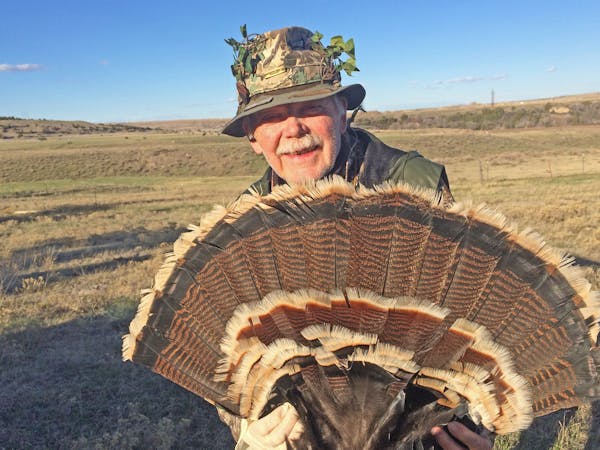When federal sharpshooters arrived in Crow Wing County last week to euthanize a herd of captive deer first infected with chronic wasting disease in 2016, they found more than one animal already dead, a state veterinarian with the Board of Animal Health said.
Dr. Linda Glaser, an assistant director with the agency overseeing deer farms, also confirmed that the "depopulation'' action killed a monstrous mule deer buck named Mass XL, a famous sire in deer farming circles.
Glaser said the elimination of all 102 mule deer and whitetail deer at Trophy Woods Ranch in Merrifield sets up an important second phase of government oversight. For the next five years, state and federal officials will watch to ensure the owner complies with mandates to make the site less contagious. Healthy deer could become infected from environmental contact with soil and other surfaces contaminated by prions that cause chronic wasting disease (CWD). Infected deer shed the non-living protein particles in saliva, urine, blood, feces and antler velvet. They can persist for many years.
"We will monitor,'' Glaser said.
Five years from now, the deer farm can be restocked, she said. But in the meantime the owner must gather, burn and bury all organic matter that could be contaminated with prions. That includes manure, feed, bedding and wooden feeders. Equipment must be cleaned, and the owner must keep the site enclosed by an 8-foot-high fence. He must notify authorities of any intrusion by wild deer, kill any such animal and have it tested for CWD.
Glaser said the management plan doesn't include mandates for soil scraping or other ground treatments because there are no viable methods proven as beneficial to fighting CWD. Nor does the plan address water runoff, she said.
Lou Cornicelli, wildlife research supervisor for the Department of Natural Resources, said he had no comment on the site controls because he hasn't seen the agreement. He previously said the depopulation action was overdue.
Glaser said three other deer farms are located within a 15-mile radius of known CWD cases and those farms now face deer movement restrictions.
Trophy Woods Ranch owner Kevin Schmidt could not be reached for comment. He agreed to surrender his deer for an undisclosed amount of taxpayer money controlled by the U.S. Department of Agriculture.
Public pressure to put the pay-to-hunt ranch out of business mounted in February after the DNR announced that an emaciated, CWD-infected wild deer was found dead a half-mile away from Schmidt's property. DNR wildlife officials had been fearful of an outbreak and the finding marked Minnesota's first case of CWD in wild deer outside of the state's southeast blufflands.
Glaser said the USDA will dispose of carcasses removed from the ranch, regardless of CWD test results. The highly anticipated CWD prevalence report is due in a matter of weeks. Asked how many deer were found dead at the ranch, Glaser said, "I'll need to wait until I hear from the sampling group on the final numbers.''
She did note that the combination of live deer and carcasses found at the ranch matched the state-monitored livestock inventory for the farm. Cornicelli said any dead deer found at the ranch would be considered high risk for having been infected by CWD.
According to a recent document written by Glaser to summarize a 2017 USDA investigation of the Merrifield deer herd, five other deer were reported to have died in the herd with no samples submitted for CWD testing. The tests are mandatory but are impossible when the carcasses are not recovered in a timely manner or when predators have destroyed needed tissues.
Since the deer farm was established in late 2012, nine deer have tested positive for CWD, Glaser said. The tests are only conducted on dead deer because there's no reliable live test.
Glaser said there were no deer escapes from Trophy Woods Ranch. Her report said there were shortcomings with the herd owner's records regarding animal identification.
Schmidt did not respond to the Star Tribune's attempts to reach him by phone and Facebook Messenger.
Torey Glenny of Tyrone, Pa., had been involved with Schmidt in marketing Mass XL, the star attraction at Trophy Woods Ranch. At age 2, the deer was described as the largest 2-year-old mule deer buck ever recorded. "They are killing the best mule deer that ever walked and all his sons and daughters,'' Glenny said. "That deer was one in a billion.''

